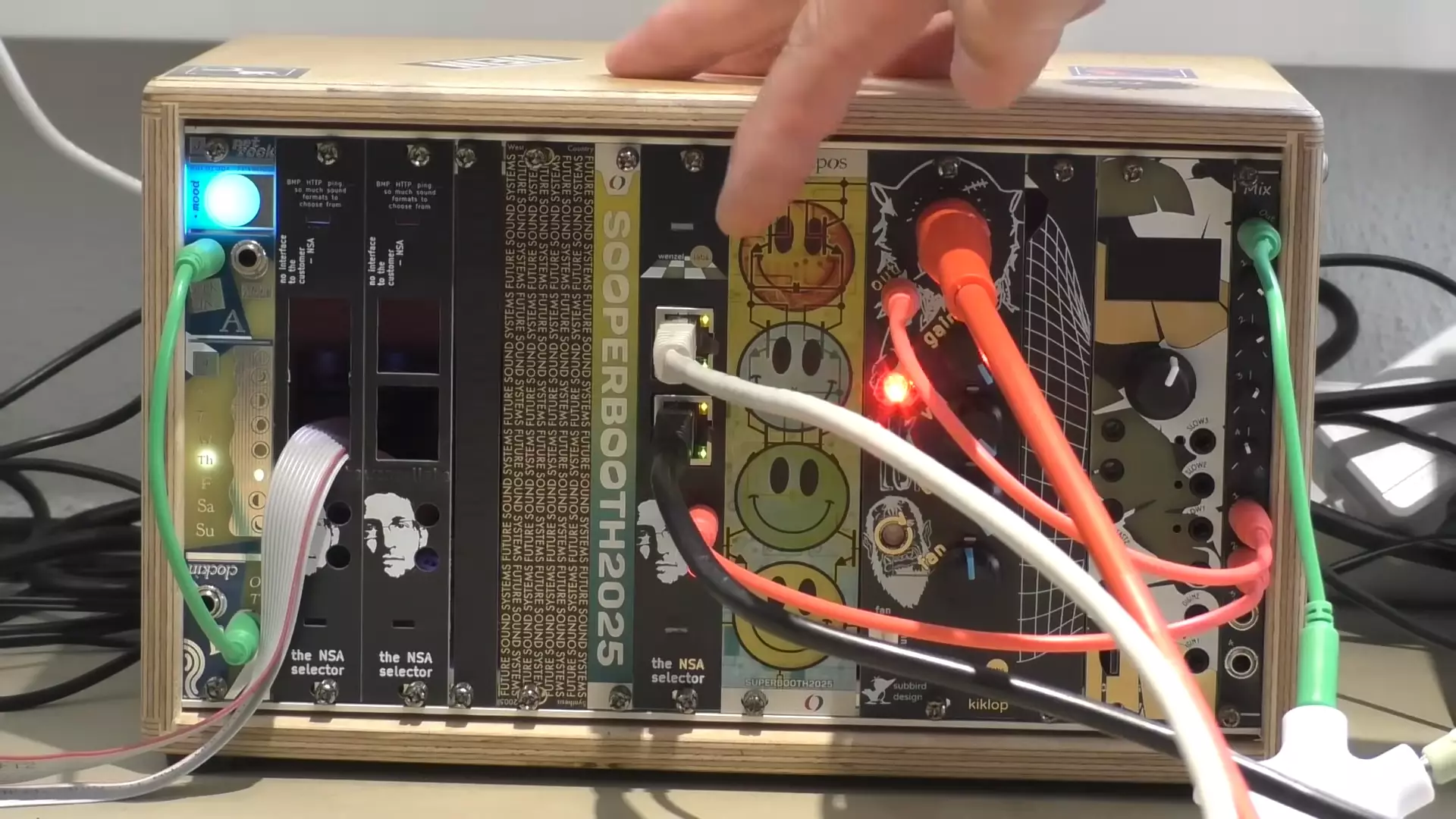In a landscape where musical innovation often clings to tradition, the introduction of Wenzellabs’ NSA Selector exemplifies a bold leap into uncharted sonic territory. This Eurorack module challenges the conventional boundaries of synthesizer design by transforming network data—something typically invisible and intangible—into raw, unprocessed audio signals. The very essence of this device lies in its rebellious spirit; rather than meticulously crafting sounds or digitally remixing audio, it taps directly into the fabric of network traffic. Its existence is a testament to the increasing fusion of digital ecosystems and experimental sound art, pushing artists and enthusiasts alike to reconsider what noise or music truly is.
This device is revolutionary not merely for its technical novelty but for its philosophical implications: information, when intercepted directly from the network, becomes a source of musical material. It questions the boundaries between digital and analog, chaos and order, noise and melody. It’s a reminder that in the modern era, even the most mundane elements—like bits of data flying through your Ethernet cable—can be transformed into a source of avant-garde sound. For those willing to explore, the NSA Selector offers an unprecedented playground where raw data becomes musical raw material; for skeptics, it stands as a provocative piece that forces us to rethink the very nature of sound production.
From Disruptive Concept to Artistic Tool
While critics might dismiss the NSA Selector as a novelty or a curiosity, its creative potential cannot be ignored. Modular synthesis has always been about exploration—pushing components beyond their intended purposes to discover something entirely new. Here, the device’s ability to produce unpredictable, often discordant, and unsettling noises makes it an ideal asset for experimental musicians, noise artists, and sound designers eager to break free from traditional constraints.
The module does not refine or filter the signals; it simply taps into the network traffic and outputs the raw bits. As a result, the sounds are inherently chaotic, often resembling glitches, shrieks, or drones that mirror the tumult of digital data itself. This randomness can be harnessed intentionally, or it can serve as an unintentional source of inspiration, prompting creators to work within the chaos. The fact that the module’s sounds correspond directly to network traffic—whether browsing Google Maps, loading web pages like 2048, or displaying images—underscores how embedded our digital lives are in every noise. It transforms everyday digital activity into an art form, making the mundane extraordinary.
Moreover, the device’s ability to project specific resource demands—such as generating sounds based on the size and shape of images—adds another layer of creative control. Artists can craft visual resources that directly influence the sonic output, creating a multi-sensory dialogue between image, network activity, and sound. This interplay opens new avenues for multimedia art and performances that comment on digital culture, surveillance, and the chaotic flow of information in the modern age.
The Cultural and Artistic Significance
The NSA Selector stands as more than just a quirky gadget; it embodies a cultural statement. In an era where digital privacy and data security are hot-button issues, converting network traffic into sound ironically highlights the omnipresence of digital data — often viewed as invisible or purely functional. By turning bits into noise, the device forces us to confront the chaos and disorder inherent in our interconnected world.
From an artistic perspective, it challenges traditional notions of musicality, presenting a raw and unfiltered version of modern digital life. The noises produced might not be conventionally pleasing, but they carry emotional and conceptual weight. They evoke feelings of discomfort, curiosity, and wonder—emotions that reflect our relationship with the digital realm. Musicians seeking to express the tumult of contemporary existence might find this tool invaluable, as it allows for a sonic representation of the chaotic, often unpredictable nature of our online interactions.
Interestingly, the NSA Selector also democratizes experimental instrument creation. With an accessible price point and DIY assembly guides, it encourages hobbyists and artists to engage directly with cutting-edge technology. This openness fosters a community of creators who see noise not as mere disruption but as a vital source of inspiration.
The Power of Embracing Digital Disarray
Ultimately, the NSA Selector embodies a philosophy: embracing chaos can lead to extraordinary creativity. Rather than trying to tame the noise or suppress the randomness, the device celebrates it. It offers a visceral reminder that in the vast, tangled web of digital data, there exists a wellspring of aesthetic possibility. For artists, musicians, and curious minds alike, it signals that innovation often lies in the refusal to conform, in the audacity to listen to the messy, unpredictable pulse of our digital world and translate that into art.
In a broader sense, the NSA Selector is a provocative tool that advocates for a deeper understanding of our digital environments. Whether as a musical instrument, a conceptual art piece, or a conversation starter, it underscores that even the most mundane infrastructure—like an Ethernet cable—can become a portal to creative exploration. It invites us to rethink the boundaries of sound, to challenge our notions of beauty and order, and to find harmony amid the chaos.

